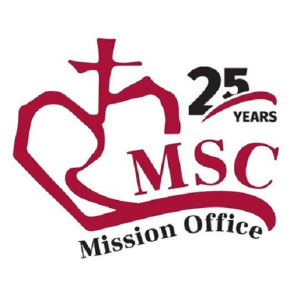Peter MALONE
Stephen Hackett MSC, inauguration as Provincial Superior, Kensington Monastery
Stephen Hackett MSC, inauguration as Provincial Superior, Kensington Monastery
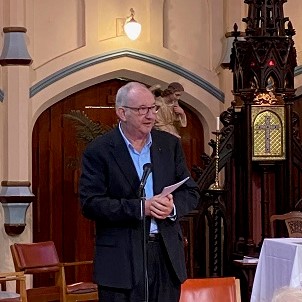
A description of today’s blessing and Induction of Stephen Hackett. Photos from Peter Hendriks and Kenji Konda.
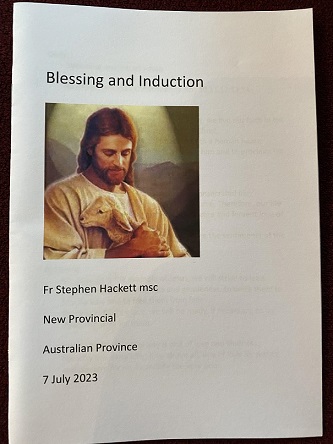
Chris McPhee, as the outgoing Provincial, lead the ceremony today, as John Mulrooney had done six years earlier. The ceremony was held at the Sacred Heart Monastery Kensington.
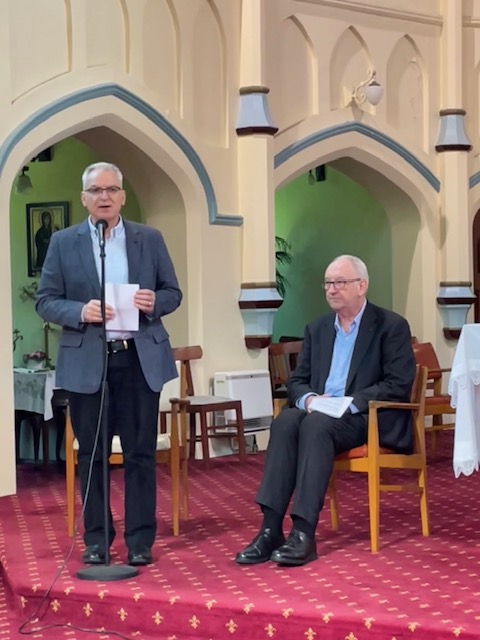
It is traditionally a very simple service and today brief sections of the MSC Constitutions, and a paragraph of Chevalier’s writings were read.
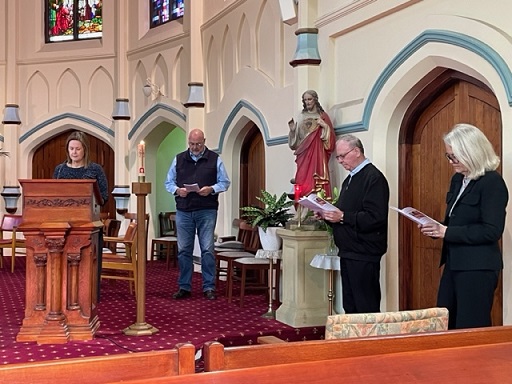
The readers were:
Mark McGinnity - Director of MSC Education;
Catherine Molihan – Director of Province Care and Assisted Living;
Fr Peter Guy – Superior of Sacred Heart Monastery; and,
Bridget Hawthorne – Executive Assistant to the Provincial.
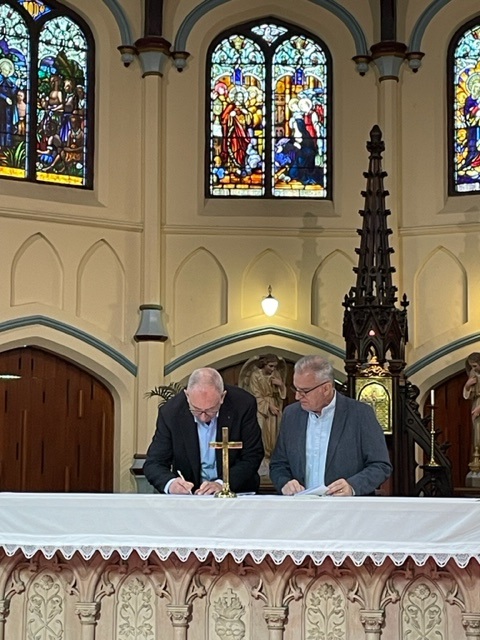
Stephen publicly professed his faith, which was followed by prayers of intercession by the community present.
Chris wished Stephen well and again thanked those who have journeyed with him for the past six years and gave the final blessing.

At the end of the ceremony, Stephen thanked all those who were there and told two stories.
- The first was when he was a teacher at Monivae College. One weekend he drove to Colac to celebrate masses for the parish. At the 7 am Sunday mass, a parishioner came a few minutes late and didn’t hear Stephen introduce himself, so he had no idea who this priest was. At the end of Mass, however, the parishioner said, “You must be a Sacred Heart Father”. The parishioner went on to explain his homily and presence reminded him of a mission given several decades earlier by an MSC Priest. Stephen was very touched by this and felt an affirmation of our MSC charism and ministry.
- The second story happened on his recent pilgrimage. One pilgrim said, “Oh the Sacred Heart is just the same as Divine Mercy”. In a homily Stephen gave later, he explained that the Sacred Heart Spirituality is unique and is not synonymous with Divine Mercy.
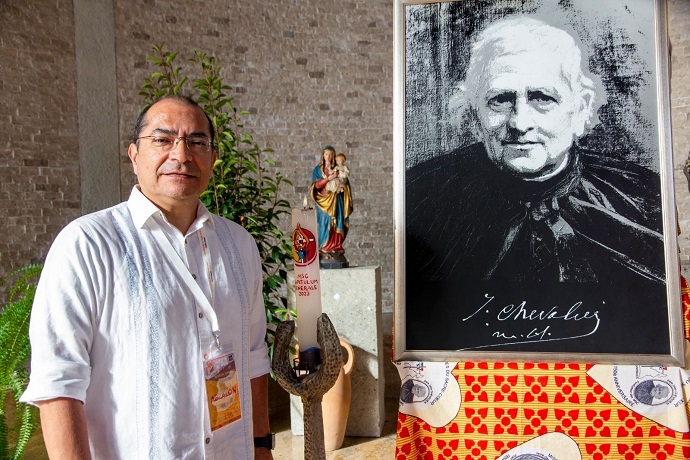
MSC Mission Office, Celebrating 25 years
MSC Mission Office, Celebrating 25 years
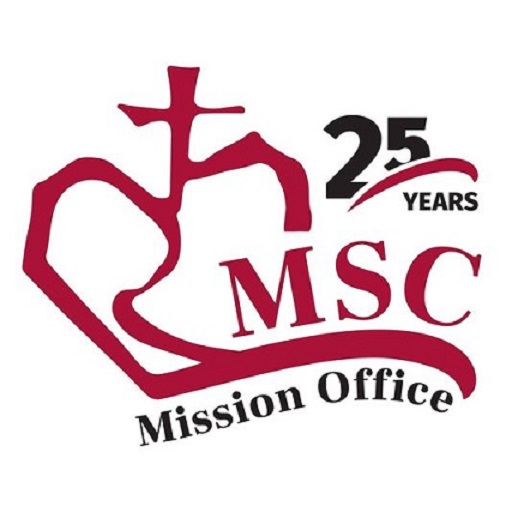
This weekend, during the coming week and then next weekend, Mass, meetings, open day.
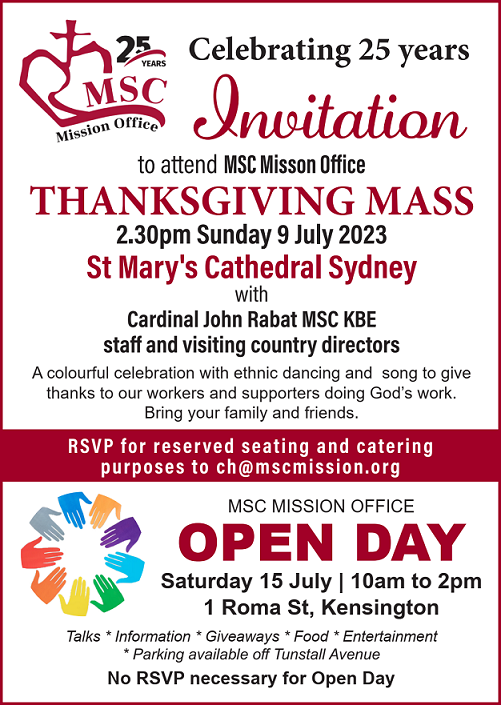
Acknowleding the first Mission Office Director, Adrian Meaney MSC
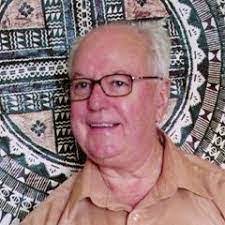
Acknowledging the present Director, Roger Purcell.
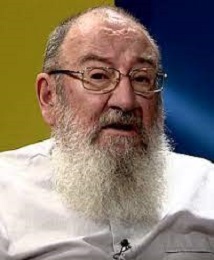
And the range of outreach and support, nationally and internationally.



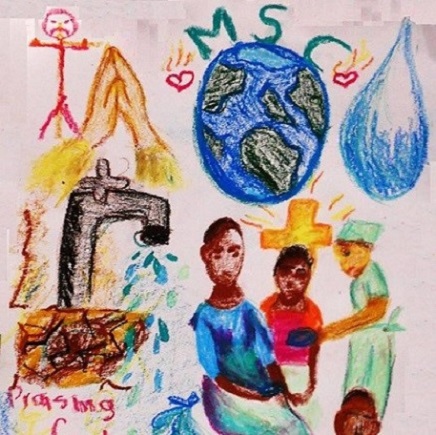
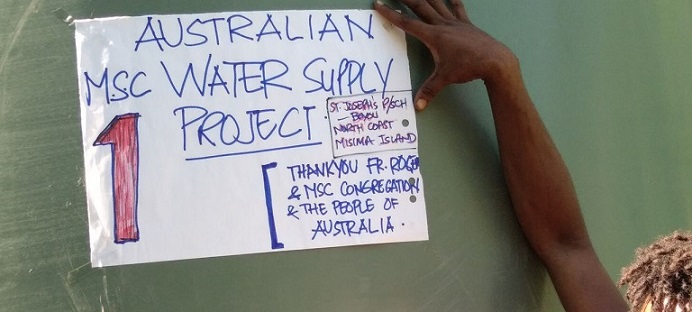
Chevalier Family, First Friday and Laudato Si theme
Chevalier Family, First Friday and Laudato Si theme

Each month the poster is prepared by members of the Chevalier Family and sent around the world for websites and Facebook pages.
This year’s theme for the whole Church is “Hope for the Earth. Hope for Humanity”.

Hung, MSC Brother, Vietnam - Mission Office Vietnam, Studies in the US.
Hung, MSC Brother, Vietnam - Mission Office Vietnam, Studies in the US.
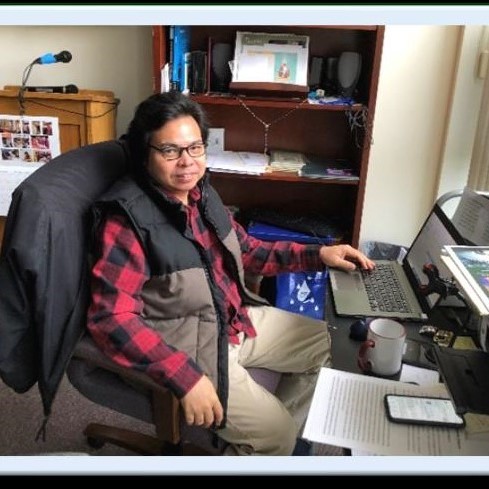
Our brother Hung has been studying in the US. He participated in the Provincial Chapter. On his way back to the US, he went home to Vietnam for MSC Mission Office work. We remember the links with the MSC Australian Mission Office which has special celebrations in Sydney next Sunday, Mass presided over by Cardinal John Ribat MSC, followed by meetings next week with representatives of other MSC Mission Offices.
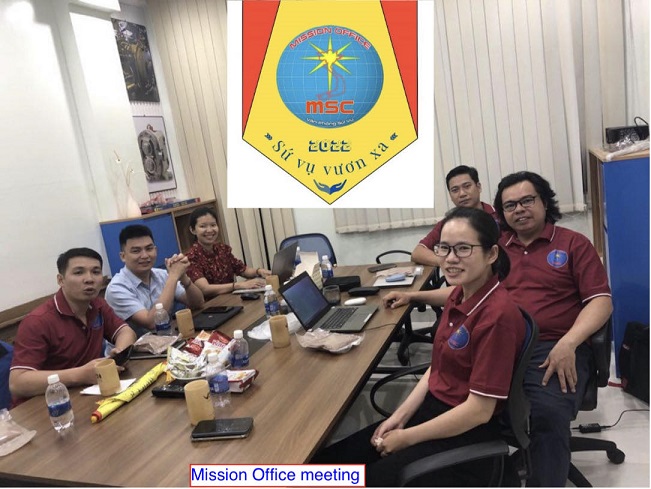
Br. Hung Nguyen, MSC, is presently taking "Ethical Issues in the Workplace" at DeSales University. This course takes place on Mondays, Wednesdays, and Fridays from 1-1:50 pm. "Ethical Issues in the Workplace" discusses moral and legal issues in the workplace around the world. It includes the study of morality from different philosophies and corporate social responsibilities. In addition, discussions include decision-making from critical thinking analyses geared toward choosing career goals and objectives. Thus, the purposes stated in the syllabus for this course encompass "critical thinking and problem-solving skills, competence in research, information literacy, technology and written and oral communication. Lastly, the study hopes to instill knowledge of Christian humanism in the Salesian tradition, with its distinction between wisdom and knowledge, truth and opinion - as this impacts the student's academic discipline and personal wellbeing. From the MSC Center Valley Diary, USA.
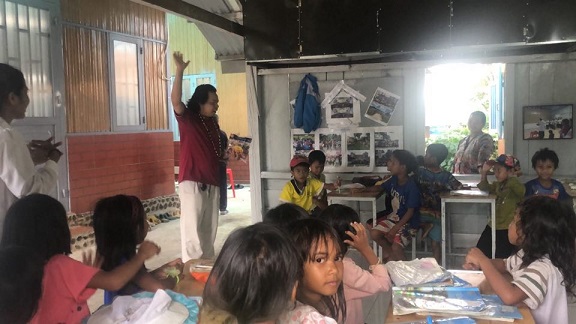
Photos showing Mission Office contacts and in the field, Vietnam.
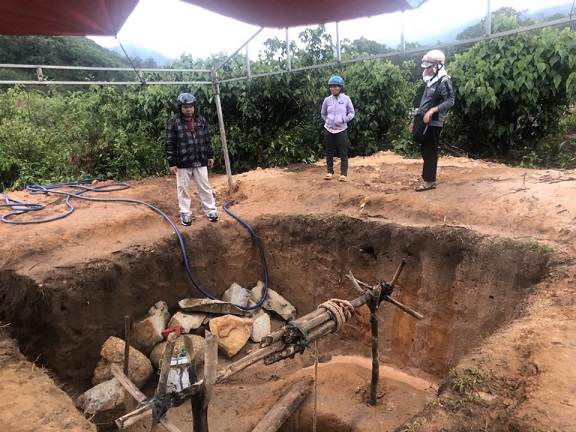

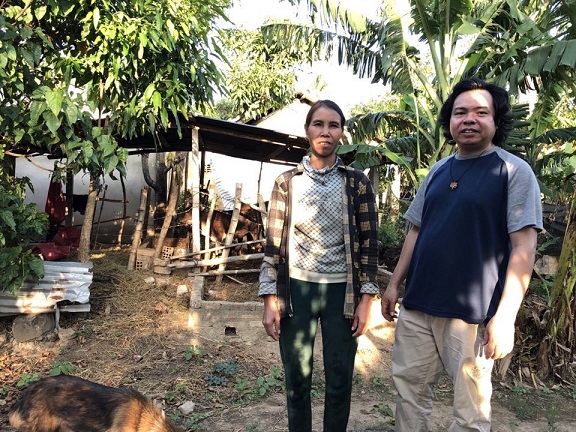
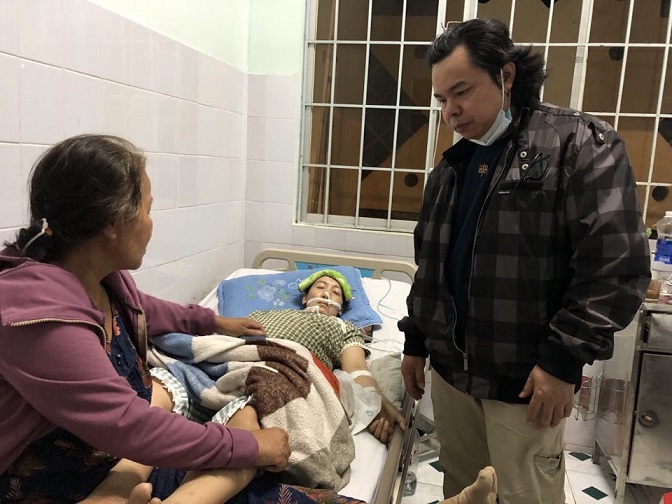

Catching up on some photos from the past month
Catching up on some photos from the past month
A Kensington outing, Patrick Sharpe, Arthur Stidwill, John Franzmann, photo Catherine Molihan
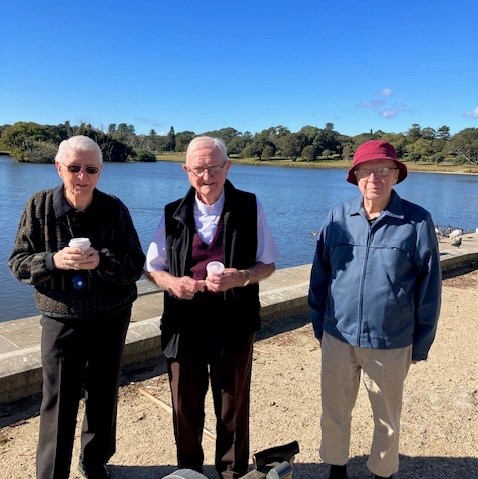
Pope Francis and members of Pontifical Commission for the Protection of Minors (Vatican Media). Tim Brennan, the bearded one , third left of the bearded Capuchin Cardinal Sean O’Malley
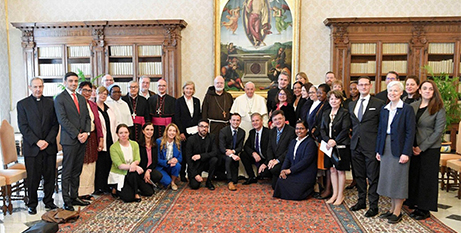
John Conroy MSC: On the grounds of the Little Sisters of the Poor, Greg McEnnally has planted a grevillea bush in front of a statue of Mary in memory of John.

Education to Issoudun, Bob Irwin, Alison McKenzie, Anne McAtomney, John Mulrooney
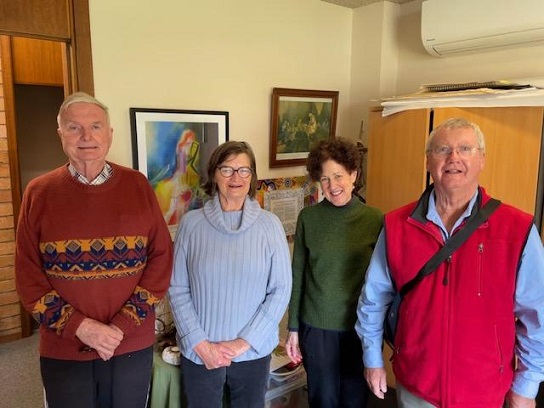
Frank Dineen turning 85
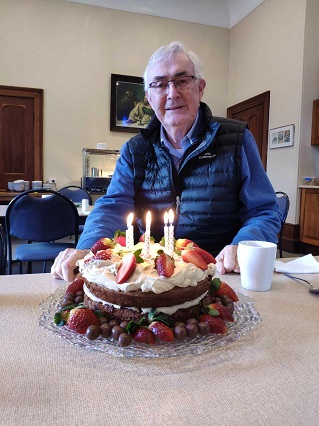
At St Mary’s Towers

John Walker’s camera perspective at Kensington, 20 years ago, the Chapel window

And a particular slant on the monastery staircase - a little sinister!
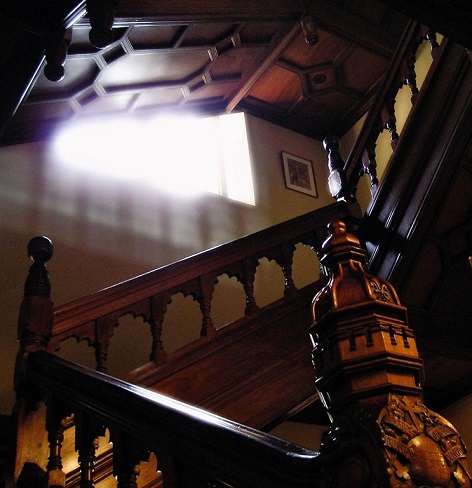
Plains, The
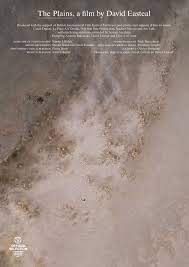
THE PLAINS
Australia, 2022, 179 minutes, Colour.
Andrew Rakowski, David Easteal, Cheri Le Cornu.
Directed by David Easteal.
An enigmatic title, especially for a three-hour documentary that takes place in a car, mainly in driving home from work at the end of the day. The Plains has won many awards – for its filming techniques, the camera inside the car, passenger seat view, for its themes in conversations between the driver and his co-worker getting a lift home, the phone calls made, the radio programs in the background.
In fact, in driving home and talking, you can cover a great number of topics, relationships, family, parents, work, going back to the past, issues in the present, day-to-day humanity and the ever-possibilities of going deeper. This film is all of that.
However, this reviewer is the wrong person to discuss The Plains. Andrew, the driver, who says he loves driving and prefers a manual to automatic, working in legal aid, phoning his mother and Aged Care, his wife of decades, as the contacts, is an older white male. As is this reviewer. But identifying with Andrew is much closer. This is a Melbourne film where this reviewer has lived for over 50 years, in the eastern suburbs where Andrew works, driving along Blackburn Road and onto the Monash Freeway. It is very familiar. And, while Andrew drives and the audience is in the backseat, this reviewer was remembering his own driving along these roads, noting Andrew driving past the Burke Road exit, cars going up the off-ramp, it is where this reviewer would go. So, noticing everything, driving this route so many times – and we are told that the cast did the trip monthly over a year for the film. (Each time we drive along the road, we do get a little further, even, at one time, passing the CBD, but remain mainly in the eastern suburbs.)
But, in the backseat, a passenger can indulge in some backseat driving, observing everything through the windscreen, listening attentively or letting the mind wander off, even dozing.
And the thought came that audiences not familiar with Melbourne will be more attentive to Andrew and David, his passenger, the conversations, the phone calls, rather than be trapped in one’s own familiar experiences and memories. What if this review were watching this action taking place in an unknown city, Newcastle or Perth…?
A recommendation for before or, better, after seeing The Plains would be to go to the film’s website, and read the very informative article by the director who we discover is Andrew’s frequent passenger. It should be said that Andrew has a drone and enjoys photographing plains and scenery, so we do get some reprieve from the backseat, watching different locations and a final drone close-up of Andrew and Cheri, his wife.
We do get to know Andrew well, a great deal about his stern German father, mother who has dementia and her story, his sister, his wife and her work, his in-laws, and glimpses of photos and videos on his tablet. We learn something of David and he tells us that each month he and Andrew prepared what could be discussed in each sequence, Andrew drawing on his memories and his great talent for improvisation for his talk, and his phone calls, perfectly natural.
Quite an experience, driving, listening and reflecting.
David Easteal: https://www.davideasteal.com › films › the-plains
Indiana Jones and the Dial of Destiny

INDIANA JONES AND THE DIAL OF DESTINY
US, 2023, 154 minutes, Colour.
Harrison Ford, Phoebe Waller-Bridge, Mads Mikkelsen, Ethann Isadore, Antonio Banderas, Karen Allen, John Rhys Davies, Thomas Kretschmann, Toby Jones, Boyd Holbrook.
Directed by James Mangold.
It looks as though Indiana Jones has been part of our movie destinies, for more than 40 years for those who were surprised and excited in 1981, discovering the Raiders of the Lost Ark and the sequels during the 1980s. But, this is the fifth and final instalment, full of action, seeing Indy when he was younger during World War II (and CGI able to make Harrison Ford look that age), moving on to 1969 and the day of the moon landing, where Harrison Ford is able to look his age (actually filming at age 80!). But, this time Steven Spielberg, after directing the other four episodes, executive produces but hands over directing to James Mangold, who has had a 25 year plus career directing quite a range of films (as did Spielberg), some of his best being Copland, Girl Interrupted, Walk the Line, Ford vs Ferrari.
This episode goes straight into action, Indiana Jones and his British archaeologist friend, Basil Shore (Toby Jones) are caught by the Nazis trying to find the Lance that pierced Jesus amongst a horde of stolen treasures. While the Lance proves to be a fake, there is, however, half of the Antikythera, a time-warping machine, made by the Greek philosopher, Archimedes. It is meant to be a gift for Hitler. However, there is a sinister Professor on board the train, Mads Mikkelsen, and the film goes immediately into action, fights, on the roof of the train, menacing tunnels, a bombed bridge and Indy and Basil diving into a river where the Antikythera sinks. So, no Lost Ark, just are lost half of the Antikythea, Dial of Destiny. So far, so exciting.
But, the action does not let up. Who should arrive at Professor Jones’ lecture but basil’s daughter, Helena, played by Phoebe Waller-Bridge (of Fleabag popularity) who contributed to the screenplay. She is strong-minded, to say the least, and her motives are less than worthy as she tries to recover the half of the dial from Indy, who is her godfather. But, who else should be in New York, but the Professor who has contributed to the rockets taking Armstrong and Aldrin to the moon. The trailer shows Indy on a horse galloping through a parade in Manhattan – and, there are shootings, Helena leaping from roof to roof, Indy on the horse… Long story short, action takes them to Tangiers, to an auction for the Dial, but auction thwarted, with a are pursued through Tangiers, and, before we know it we are in the Aegean, a diving expedition led by Antonio Banderas, Nazis in pursuit, the help of a young thief whom Helena had befriended, then to Syracuse, an expedition into the caves to find Archimedes to them and the half of the dial. What more could we want!
Of course, the Nazis turn up again, fights in the caves, and the possibility of going back in time, the Professor donning Nazi uniform, merely wanting to go back to 20th of August 1939 to thwart Hitler and invade Poland himself. It doesn’t quite work out that way and there is more action and stunt work to be seen, planes, helicopters, crashing, Archimedes, and Indy having to decide where he wants to spend the rest of his days!
Within a week of its release, the online trolls have been at it again, determined to attack, the “Dial of Disappointment”, not the way that the series should end… And even more rampaging hostility. However, this reviewer saw the film with a rather larger suburban audience than usual, who seemed to be more than satisfied with their nostalgia, with their enjoyment, and, a very nice ending, just emotionally right, as we say farewell to Harrison Ford as Indiana Jones.
1. The long popularity of Indiana Jones? Adventure, action, Harrison Ford, Indiana Jones himself, fantasy?
2. Indiana Jones after 42 years, the fifth film? Fans over the decades? Expectations? Final adventure?
3. The vision of Steven Spielberg, the direction of James Mangold? The screenplay in the tradition of the other films? Action, enemies, quest…?
4. Harrison Ford, his status over the decades, filming aged 80, CGI to making look younger in the World War II episodes? Looking his age the rest of the time, a farewell?
5. The prologue, World War II, the looted treasures, the Nazis, the Lance of Jesus, Indy and Basil searching for it, Basil apprehended, questioned, tortured? Defending himself as a British archaeologist? But with Indy’s bag? Into discovering they Lance was a fake? The discovery of the Antikythera? The half? The professor and his ambitions? The officer, the gift for Hitler, Indy and the attack, the fights, the roof of the train, the tunnels…, The bombed bridge, into the water, losing the dialogue?
6. Transition to 1969, the moon landing, New York celebrations, Indy old and tired, the story of the death of his son in the war, the divorce from Marion? Alone, going to the University, the reaction of the students, the question is, Helena and her answers, meeting Helena, Basil’s daughter, her knowledge, ambitions, discussions with Indy? In the meantime, the professor in New York, his associates, thugs, going to the University, the shooting of the secretary, deaths, the pursuit of Helena, her leaving across the buildings and escaping through the procession, trapping Indy, his being taken by the Nazis? The procession, his quick action, riding the horse through New York…!
7. Helena, mercenary, wanting to sell the dial, going to Tangiers, in league with Teddy, the option, the gangster and his pursuit, Indy arriving, the dial, the escape in the Chase? The Prof, the pursuit?
8. The information, the plains, getting to the Aegean, the boat, the Capt, the diving, the deals and Indy is dread of snakes, finding the half of the dial? The professor, the thugs, their boat, the shootings? Teddy and his ingenuity, the escape?
9. The action in Syracuse, getting the information about Archimedes, going into the caves, the scorpions, the dangers, finding Archimedes tomb, the dial in the skeleton? Taking it? The professor taking Teddy, is using his wits, but the capture of the dial?
10. The theories of time warp, time travel, the professor and his ambitions, donning the Nazi uniform, wanting to go to the invasion of Poland, to supplant Hitler? Teddy, stealing the plane, the pilot waking up, the pursuit, the landing? Helena, the escape, climbing aboard the plane? Indy, wounded, the professor and his hopes, the conflict in the plane, the shootings, the crash?
11. Archimedes, the siege of Syracuse, the Romans and the centurions, Archimedes and the plane, the situation on the shore, the battle going on, the planes flying over, the Romans thinking they were dragons, the crashes, the dial, Archimedes and the mystery, Indy and Helena talking to him in Greek? The explanations? Indy wanting to stay in the past, his quests, Helena punching him?
12. Back in New York, recovering, Helena cheery, Teddy, Marion returning, Salah and his children, going to get ice cream, husband-and-wife reunited, the nice ending, the touch of tearfulness, a good farewell?
El Dorado: Everything the Nazis Hate

EL DORADO: EVERYTHING THE NAZIS HATE
Germany, 2023, 93 minutes, Colour.
Directed by Benjamin Cantu and Matt Lambert.
This is a documentary, mainly about Germany in the 1920s and 30s, and a postscript in 1945 with the Allies opening of the concentration camps. There is also dramatised footage, especially recreating the El Dorado club in Berlin in the 1930s. There is also a dramatisation of the personalities and careers of tennis player Gottfried Von Cramm and his wife.
The cowriter-director, Benjamin Cantu, made a documentary some decades earlier focusing on paragraph 175, the German edict about homosexuality (which continued after the war and was revoked in 1994). While this film is for the general public, it seems specifically made for the LGBTQI+ plus community.
But, as a documentary, it is something of a mix-gatherum, changing focus throughout the film. Themes are taken up, then left, and not all of them brought to conclusion.
There is a dramatisation of life at the El Dorado club, the gay men and women who frequented it, finding it a sanctuary, the style at the club, behaviour, dancing, drugs, sexual liaison is. Some of this is more than a touch crude – but memories, bitter memories, of Cabaret. There is a focus on SA leader, Rohm, and his frequenting the club, his liaisons, but also his anti-homosexual stances concerning what it is to be a dominating Aryan male, leading to misogyny. Some of this is dramatised.
However, the club is left (and a finale indicating that it is an upmarket food store in the present).
The documentary-style of the documentary seems more interesting. There are several experts, an emphasis on trans people, information about transgender procedures in Berlin in the 1930s and the consequences, especially for two women. Some of the commentators are also trans.
There is a great deal of footage showing Hitler, close-up, and the crowds in adulation. There is footage of Hitler and Rohm, the parades, scenes of the SA men together (dramatised effectively by Lucchino Visconti in The Damned), Rome’s presumption about Hitler tolerating him as long as she was private, his arrest – and glimpses of Krystalnacht from this perspective of the persecuted Jews. And then there is the footage of the liberation of the camps.
The story of Gottfried Von Cramm could have been a film in itself. In the dramatised sections, there is a reaction to him and his wife, the marriage, the open marriage, their behaviour, relationships. But Von Cramm was a champion tennis player, admired throughout the world, gracious in defeat, giving interviews about his not identifying with National Socialism. When he eventually returns to Berlin after a world tour, he is arrested, ostentatiously, the regime making a point about his sexual orientation and behaviour, and his imprisonment – and the attempt in 1951 to have these charges removed from his record, a court case, and with his partner before the war returning to Germany for the case.
The other story is the highlighting of two young friends, one from Hungary, one from Vienna, who meet on holidays, fall in love, have a distant relationship, the Hungarian disappearing into the concentration camps, the other, Walter Arlen, speaking to camera about the relationship, it being revealed that he is aged 100, was able to move to the United States, found a partner, had a successful career as a musician and composer.
Quite a lot of interesting ingredients but the film and its structure and interconnecting of stories and dramatisations, something of a mess.
Remembering MSC Mission in the Northern Territory and the Torres Strait Islands: Affirming NAIDOC Week.
Remembering MSC Mission in the Northern Territory and the Torres Strait Islands: Affirming NAIDOC Week.
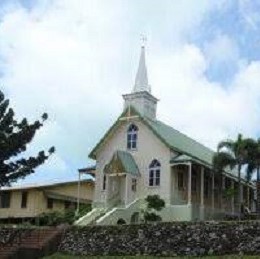
Celebrating NAIDOC week, the first week in July, 2023 in this referendum year. This is important as we remember our mission in the Northern Territory from 1906. Mission on the Torres Strait Islands began earlier. A reminder from the website, Find and Locate. The acronym NAIDOC stands for National Aboriginals and Islanders Day Observance Committee
The MSC in Torres Strait
For details of MSC on mission in the Torres Strait, see Jim Littleton’s 2009 book on Mission in the Torres Strait. Here are some paragraphs from Googled articles.
The musically talented Fr. Joseph Guis (born at Auriol in 1869, died 1913) was stationed at Thursday Island, first to train cathechists for the Papuan mission, and later to train Sisters for aged care. Thursday Island counted as one of the islands in the vicariate of British New Guinea that Bishop Navarre administered until 1908. Its various Catholic institutions became an important presence in the poly-ethnic Thursday Island community, competing with the London Missionary Society that had made a promising start at Mer and Erub (Murray and Darnley Islands) in the Torres Strait.
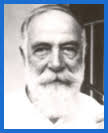
After World War I the pearling industry and the importance of Thursday Island as an administrative centre declined and the MSC reached out to the Torres Strait islands. Thursday Island parish priest Fr. Jack Doyle erected a mission church on Naghir Island in 1935 and a mission for mixed descendants on Hammond Island (Keriri) in 1929. When Fr. Gsell MSC became bishop of Darwin in 1938, the Torres Strait mission was transferred from the Vicariate Apostolic of Papua to the diocese of Darwin, and therefore became part of the Australian MSC province. Just a few years later dramatic wartime evacuations of civilians from the north took place when 459 White, coloured and indigenous people from Thursday Island and Hammond Island were crowded into the Ormiston in 1942 and sent south, many of them to Cooyar. From German Missionaries in Australia, Griffith University, prepared by Regina Gantner.
St Henry's Roman Catholic Asylum, on Thursday Island, was an orphanage run by the Daughters of Our Lady of the Sacred Heart and the Missionaries of the Sacred Heart. It was part of the Sacred Heart Mission. The orphanage opened in 1889 and closed 1942 when the children were moved from Thursday Island to Cooyar Mission.
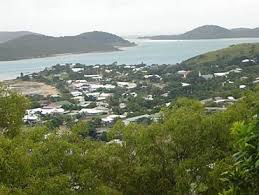
The orphanage, built by the missionary brothers, opened around June 1889. The Constitution, dated 20 June 1889, outlines the orphanage's purpose:
St Joseph's Roman Catholic Mission. The Hammond Island Mission Orphanage, on Hammond Island, was run by the Missionaries of the Sacred Heart. It opened in 1929 and closed in January 1942, when the residents were evacuated to Cooyar. A boys' dormitory housed the children. Hammond Island was originally declared a government reserve in 1881. The inhabitants were forcibly removed to Moa Island (also known as Banks Island) in 1922.

In 1929, Father Doyle from the Missionaries of the Sacred Heart, took about 15 'needy half-caste boys' from the Thursday Island Catholic Orphanage to establish an orphanage on Hammond Island. They were originally housed in a galvanised iron house near the beach. The Church had built a new boys' dormitory by 1932. The Mission's role was to care for half-caste orphan children and the children whose parents could not provide for them.
A convent was built in 1935 and two Sacred Heart Mission Sisters went to live there at the beginning of 1936. The Sisters took over the school and became responsible for the domestic management of the presbytery and the Orphanage. In September 1934 there were about 14 boys living in the boys' home. By September 1938, 10 boys were housed in the Orphanage, 6 of whom were identified as State Wards. In June 1939 there were 11 boys in the Hammond Island Orphanage.

In January 1942 all Hammond Island residents were evacuated to Cooyar, a small town north of Toowoomba. This included about 50 children aged between 8 and 15 years. They were accommodated in an old, vacant and de-licensed hotel. It became known as the 'Cooyar Mission', however correspondence about the Hammond Island Orphanage during the war years referred to it as the 'Hammond Island Institution - Cooyar'. The number of occupants began to decrease and the Mission at Cooyar closed in November 1944.
Although the prohibition on re-entry to Thursday Island was lifted in March 1946, the first families did not return to Hammond Island until July 1947. Within 12 months the Hammond Island Mission was functioning again with the local school re-opening in July 1948. There is no evidence that the Hammond Island Orphanage re-opened after the war.
St Joseph’s Catholic Church on Kiriri (Hammond Island) has a long history dating back to the early 1920s. At the time of its construction, the Sacred Heart missionaries were keen to expand their area of operations, especially in the context of the growth of population driven by such rapidly developing local industries as pearling.
Formal permissions were sought and granted in the late 1920s and the Sacred Heart missionaries began establishing themselves on the island. One of the first priorities was to construct a church and this was quickly undertaken by the first priest, Father McDermott, with the help of the local people. Opened in 1929, this first St. Joseph’s Church, as with other early mission buildings, relied heavily upon locally obtained materials. The floor was originally beaten earth, but wooden flooring was later added. The walls were of plaited coconut leaves and the roof was of corrugated iron sheeting. This first church served the community for many years, however the coming of the Second World War and the evacuation of Kiriri and other communities meant that the building was to deteriorate over time. By the end of the war, the building was in poor condition and it was said that even its bell had disappeared, presumed stolen. There were hopes that it could be repaired but this was not to be, mainly due to the building’s partial destruction by a severe cyclone in 1948.
A larger, replacement church was commenced in 1952 and completed in late 1953. This new church was a much larger and grander building than was its predecessor. Of steel framed construction, around 60,000 blocks of local bluestone granite were used with the new St. Joseph’s Church being formally consecrated in May 1954. From John Oxley Library, State Library of Queensland, 2018

New Boy, The
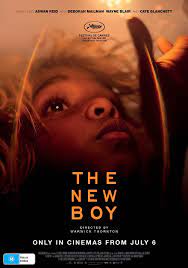
THE NEW BOY
Australia, 2023, 116 minutes, Colour.
Cate Blanchet, Aswan Reid, Deborah Mailman, Wayne Blair, Shane Brady, Tyrique Brady.
Directed by Warwick Thornton.
An intriguing film, colonial attitudes, First Nations people, religion and faith. As a realistic representation of Australian history, not so much. Writer-director, Warwick Thornton (Samson and Delilah, Sweet Country) references his own boyhood experience with the monks at Western Australia’s, New Norcia, the architecture of the convent, the agricultural background, winter, olives… As a probing of the impact of missionaries (especially Catholics and nuns), quite an allegory to be explored – the lives of the indigenous people, especially focusing on the new boy of the title (about 11 years old, never named though the orphan boys initially called him Darkie, a wonderful screen presence by Aswan Reid). No explanation of his origins except the opening where he throttles a policeman, is taken into custody, in a bag, dumped at the convent at night. There are two indigenous characters at the convent, Sister Mum, the benign cook, and George, the taciturn handyman, (played by veterans Deborah Mailman and Wayne Blair).
Ordinary audiences may be bewildered and/or put off by the focus on Jesus, prayer, piety and devotion and, above all, the large new crucifix, the excited arrival, elevated in the chapel and the nails hammered in. (The final long-held image of the film is the crucifix). But, for religious audiences, there is a fascination with how the new boy responds to the crucifix, identifying with Jesus, embracing, literally, the figure of Jesus, taking him down from the cross, tender towards him, removing the nails, the boy identifying with Jesus, even to wounded hands, becoming what we might call a Christ figure. Which highlights the challenge of the church and the Mission to the indigenous people and their embrace of Jesus in Christian practice and the meeting of Dreaming and lore and the Gospels.
This is embodied in Sister Eileen (and a worldwide audience wanting to see a Cate Blanchett film). Promotion refers to her as a “”renegade nun”. Not really, quite misleading. She is definitely eccentric, deeply committed in her way, sometimes mentally disturbed, sometimes drinking, devoutly prayerful, the crucifix. She exercises power over the small group of under-12 orphan boys, (with a World War II setting) but combines orders and discipline with kindness. And the boys respond. As does the new boy though he is often bewildered (sleeping under the bed, mystified by spoons for porridge, not speaking except a few of his own words, but, ultimately, his word is a repeated Amen. And, mysteriously, he has the power to create fire in his hand, a kind of numinous link. There is no priest, Sister Eileen taking over from Dom Peter, interpreting rules, performing baptisms, stole and chasuble, even the new boy, cleaning and dressing up, but the loss of his power of fire. She has set up her own church but relies on her piety. Cate Blanchet as usual, a tour de force presence. So, a 21st-century perspective by a top filmmaker, provocative on colonial issues, on missionary issues, the consequences, but relying on traditions and art of Catholicism to evoke deeper social and spiritual responses.
1. The title, the introduction to the boy, his age, attacking the policeman, throttling him? Taken into custody, in the bag, dumped at the convent door, aboriginal boy?
2. The setting, Western Australia, the director’s own story at New Norcia, the background of the monks at New Norcia, schools, the sisters? The convent, the accommodation, the rooms, dining room, kitchen? The farm, olives, the wheat, the machinery? The field fires and putting them out? The authentic atmosphere? The Nick Cave-Warren Ellis score?
3. The World War II setting, the West Australian countryside, the train, the passengers, the soldiers, talk about the war? The King’s final speech and peace?
4. The credibility of the plot? The nuns, the death of Dom Peter, the isolation, the covering the death, running the school themselves? Possibilities of discovery? Sister Eileen writing the letters in Dom Peter’s name? To the state protector? Feigning the argument with Dom Peter to deliver the crucifix? The two sisters, isolated? The running of the school, personal lives, relationship with the boys? The acceptance of the new boy, his place in the school, then making exceptions for him?
5. The story of the boy, age, his own language, rarely speaking, the mystery of the convent, the bed, sleeping under the bed? The mysterious fire in his hand? Indication of powers, traditional lore? The food, awkwardness with the spoon? Relationship with the other boys? Matthew punching him, the boys cheering, the new boy knocking down Matthew? The bond between them? The interactions with Sister Eileen? The happy interactions with Sister Mum? Interactions with George, George’s suspicions? In the chapel, the prayer, the arrival of the crucifix, the boy and his reaction to the crucifix, the nails, climbing the crucifix, hanging on to Jesus, the relationship with Jesus, taking out the nails, taking Jesus away, tending to him with the jam, injuring his own hands? Sister Eileen’s reaction? Jobs, the games, putting out the fires, the olives, the wheat? His riding on the wagon? Gradually adapting? Saying amen? Sister Eileen baptising him? Washing him, combing his hair, clothes? The game, the roller up the hill, George urging him to go? His future? And the loss of the fire in his hand?
6. The portrait of Sister Eileen, her piety, prayer, the habit, the chapel, baptising Johnny, wearing the stole, baptism the priestly thing, farewelling Johnny? Johnny and his walking away with a suitcase? Her drinking? Her relationship with Sister Mum? Power, discipline, Michael is the head boy, the caning? Her reaction? The work, out in the fields? Her response to the new boy, caring for him, empathy, making him special, her reaction to him with the crucifix, putting the crucifix back, George hammering in the nails, her decision to baptise the boy? Wearing stole and chasuble? The change in the boy, the game, his leaving? Her future? The deception about Dom Peter, pretending that he was present, his death, signing the documents, for the police, the letters to the protector, the argument about the delivery of the crucifix? Her future?
7. Sister Mum, kindly, cooking, her photo with the children, her vocation, with the boys, happy, prayer?
8. George, aboriginal background, working for the sisters, handyman, the olive crop, the wheat, putting up the crucifix? Finally urging the new boy to run?
9. The boys, their age, orphans, entrusted to the nuns, the background of the war, Johnny, 13, leaving, to work on the farm, the baptism, his suitcase and walking away? Michael in charge, bossy, the caning, the injuries during the fire, in the wheelchair? Matthew, big, the fight with the new boy, the reconciliation? The role of the other boys, in the chapel, the clothes, the work, the meals? Their reaction to the new boy?
10. The background of the police, attitudes towards aboriginals, the rest of the boy, delivery at night? The threat of the police?
11. The film as an allegory of colonial attitudes, missionary attitudes, the indigenous people? The effect?
12. The spirituality themes, the focus on Jesus, the crucifix, the nuns prayer, the boys prayer, the new boy and his response to Jesus? Faith and spiritual themes?

